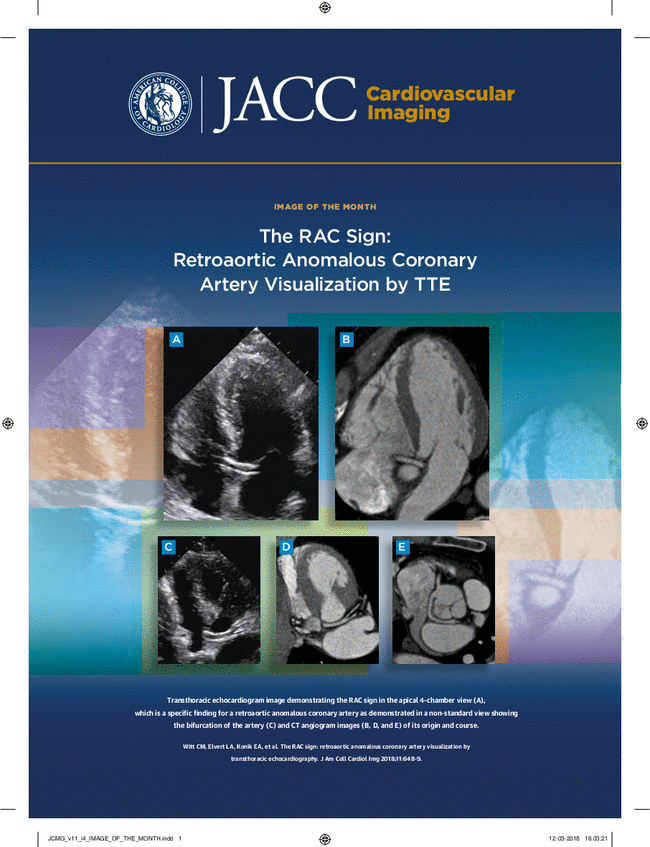无症状人群的冠状动脉斑块体积:南佛罗里达浸信会健康中心的迈阿密心脏研究
IF 15.2
1区 医学
Q1 CARDIAC & CARDIOVASCULAR SYSTEMS
引用次数: 0
摘要
背景冠状动脉ct血管造影(CTA)所得斑块负担与心血管事件风险相关,有望用于临床实践。了解普通人群中基于计算机断层扫描的定量斑块体积的规范值对于确定患者管理具有重要的临床意义。目的:本研究旨在调查斑块体积在普通人群中的分布,并利用MiHEART(迈阿密心脏研究)在南佛罗里达浸信会健康中心开展一项大型社区队列研究。方法该研究纳入了2301名无心血管疾病的无症状受试者。通过人工智能引导的定量冠状动脉计算机断层血管造影(AI-QCT)分析对斑块体积进行定量评估。用非参数技术估计斑块分布的百分位数。结果参与者平均年龄53.5岁,男性占50.4%。中位总斑块体积为54 mm3 (Q1-Q3: 16-126 mm3),随着年龄的增长而增加。男性受试者的中位总斑块体积大于女性受试者(80 mm3 [Q1-Q3: 31-181 mm3] vs 34 mm3 [Q1-Q3: 9-85 mm3], P < 0.001);根据种族/民族没有差异(西班牙裔53 mm3 [Q1-Q3: 14-119 mm3]与非西班牙裔54 mm3 [Q1-Q3: 17-127 mm3]; P = 0.756)。总斑块体积≥20mm3的男性患病率为81.5%,女性患病率为61.9%。年轻人的非钙化斑块比例更高。结论AI-QCT可检测到绝大多数研究对象的斑块。此外,年龄和性别特异性的形态图提供了无症状人群中斑块体积分布的信息。(迈阿密心脏研究[MiHEART]浸信会健康南佛罗里达;NCT02508454)。本文章由计算机程序翻译,如有差异,请以英文原文为准。
Coronary Plaque Volume in an Asymptomatic Population: Miami Heart Study at Baptist Health South Florida.
BACKGROUND
Coronary computed tomography angiography (CTA)-derived plaque burden is associated with the risk of cardiovascular events and is expected to be used in clinical practice. Understanding the normative values of computed tomography-based quantitative plaque volume in the general population is clinically important for determining patient management.
OBJECTIVES
This study aimed to investigate the distribution of plaque volume in the general population and to develop nomograms using MiHEART (Miami Heart Study) at Baptist Health South Florida, a large community-based cohort study.
METHODS
The study included 2,301 asymptomatic subjects without cardiovascular disease enrolled in MiHEART. Quantitative assessment of plaque volume was performed by using artificial intelligence-guided quantitative coronary computed tomography angiography (AI-QCT) analysis. The percentiles of the plaque distribution were estimated with nonparametric techniques.
RESULTS
Mean age of the participants was 53.5 years, and 50.4% were male. The median total plaque volume was 54 mm3 (Q1-Q3: 16-126 mm3) and increased with age. Male subjects had greater median total plaque volume than female subjects (80 mm3 [Q1-Q3: 31-181 mm3] vs 34 mm3 [Q1-Q3: 9-85 mm3]; P < 0.001); there was no difference according to race/ethnicity (Hispanic 53 mm3 [Q1-Q3: 14-119 mm3] vs non-Hispanic 54 mm3 [Q1-Q3: 17-127 mm3]; P = 0.756). The prevalence of subjects with total plaque volume ≥20 mm3 was 81.5% in male subjects and 61.9% in female subjects. Younger individuals had a greater percentage of noncalcified plaque.
CONCLUSIONS
The large majority of study subjects had plaque detected by using AI-QCT. Furthermore, age- and sex-specific nomograms provided information on the plaque volume distribution in an asymptomatic population. (Miami Heart Study [MiHEART] at Baptist Health South Florida; NCT02508454).
求助全文
通过发布文献求助,成功后即可免费获取论文全文。
去求助
来源期刊

JACC. Cardiovascular imaging
CARDIAC & CARDIOVASCULAR SYSTEMS-RADIOLOGY, NUCLEAR MEDICINE & MEDICAL IMAGING
CiteScore
24.90
自引率
5.70%
发文量
330
审稿时长
4-8 weeks
期刊介绍:
JACC: Cardiovascular Imaging, part of the prestigious Journal of the American College of Cardiology (JACC) family, offers readers a comprehensive perspective on all aspects of cardiovascular imaging. This specialist journal covers original clinical research on both non-invasive and invasive imaging techniques, including echocardiography, CT, CMR, nuclear, optical imaging, and cine-angiography.
JACC. Cardiovascular imaging highlights advances in basic science and molecular imaging that are expected to significantly impact clinical practice in the next decade. This influence encompasses improvements in diagnostic performance, enhanced understanding of the pathogenetic basis of diseases, and advancements in therapy.
In addition to cutting-edge research,the content of JACC: Cardiovascular Imaging emphasizes practical aspects for the practicing cardiologist, including advocacy and practice management.The journal also features state-of-the-art reviews, ensuring a well-rounded and insightful resource for professionals in the field of cardiovascular imaging.
 求助内容:
求助内容: 应助结果提醒方式:
应助结果提醒方式:


